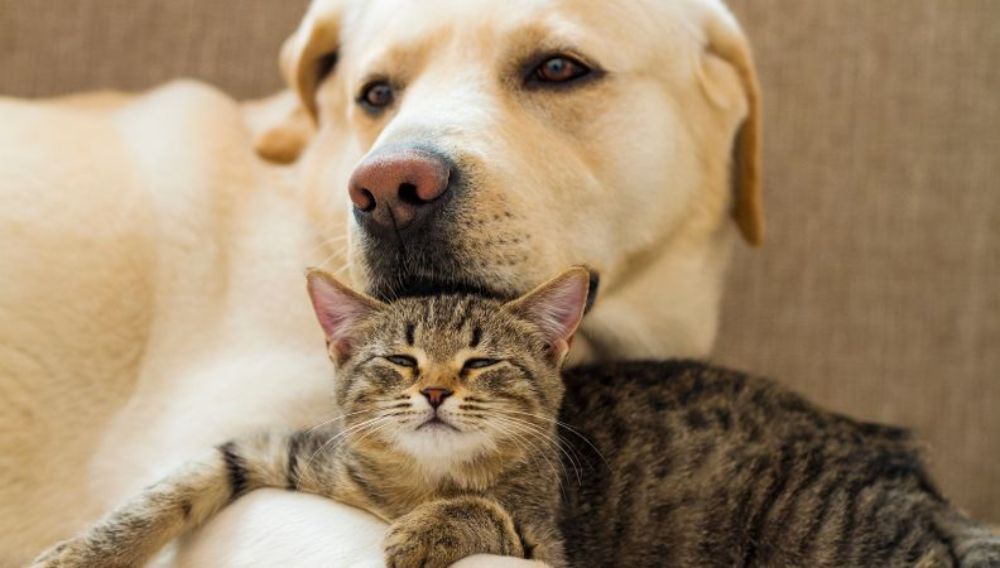
Ringworm is a highly contagious skin condition that can affect cats and dogs. It can also be passed to their owners and other pets in the household. If you spot any signs of ringworm on your pet, contact with your vet for advice as soon as possible before it spreads to the whole family.
To help you understand about ringworm we have joined up with Vetstream, experts in the veterinary field, and have put together some information on this skin condition so you can recognise the signs, find out how to treat this fungal infection and what to do to prevent it from spreading.
What is Ringworm?
Ringworm is a fungal skin infection, also known as dermatophytosis. The classic, round, raised ‘ring’ shape that’s seen on the skin in people explains where the first part of the name of ringworm comes from, but the condition has nothing to do with a worm at all!
The most common cause is the fungus Microsporum canis which feeds on keratin found in hair, skin and nails. It’s not a serious or life-threatening condition but it is zoonotic. This means it can be passed onto other animals and people living in the same house.
Is Ringworm Common?
Yes! Ringworm is common in cats and dogs. They can carry the fungal spores of M. canis on their coats but often show no clinical signs (are asymptomatic). But, they can pass the spores onto other animals that can show the signs that are typical of the infection. Young cats and dogs, particularly those under a year, are most commonly affected although older and sick animals with a weakened immune system may also become infected with ringworm.
How do Dogs and Cats Catch Ringworm?
The fungal spores can be carried on their coats and can survive for months or even years. Cats seem to be diagnosed more often than dogs with cases of ringworm. Persian cats and other long-haired breeds are more likely to seen with the infection. Some breeds of dogs like small terriers seem to be affected more often than other breeds too.
What does Ringworm Look Like?
You might notice the following signs; typically, affected areas are the face, ears, front legs and nails of infected animals:
Ringworm Symptoms
- Circular areas of hair loss
- Skin lesions that are red and crusty
- Scratching or chewing at hair: this can lead to vomiting, hairballs in cats and constipation
- Nail loss or thickening
- Sore or ulcerated skin (rare)
Diagnosis of ringworm in cats, especially if they’ve got long coats can be tricky. The signs can be similar to other cat skin conditions which also makes it difficult to diagnose. To be sure, your vet will probably want to take some hair plucks and samples of coat brushings for fungal culture.
A fungal culture is a test used to see if fungi are present in an area of the body. They may also use UV light (Wood’s Lamp examination) to look at the fungal spores on a hair sample – fungal spores glow under a UV light which makes them easy to spot! Fungal spores can also be found using a microscope.
In people, ringworm usually starts as a reddish, scaly patch of skin which may be itchy or dry. It will resemble a ring or a series of rings and may be raised with bumpy borders around a scaly centre. Elderly people, young children or people with a weakened immune system are more likely to become infected.

How to Treat Ringworm in Dogs and Cats
Most healthy cats and dogs are able to pass off ringworm infections within a few weeks without needing treatment. But, during this time they are a risk to others, so treatment is usually recommended. If your pet needs treatment your vet will give them some antifungal oral medications and an antifungal topical treatment like lotion or shampoo. Make sure you follow the instructions given by your vet.
Treatment usually lasts for around 6 weeks, but you’ll probably have to use lotions or medicated shampoos for several months until it has completely gone. Resist the temptation to stop any treatment early - if you stop too soon, the infection will probably just come back again.
Make sure you always wear gloves and protective clothing when treating your pet. Clipping your dog or cat (with scissors) is a good idea as this reduces the risk of the infection spreading. Your vet will want to take regular samples for testing to check if your pet is still infected. All other pets and any people living in the same house that have been in contact with the infected animal should be examined for signs of infection.
All pets living together should be treated, even if they haven’t got any obvious signs of infection. Treatment will need to continue for two weeks after the signs have disappeared, or until two samples taken a week apart come back negative. Treatment for ringworm can be long and drawn out!
Tips for keeping ringworm at bay… Keep your pet isolated or confined to one room to prevent the infection from spreading. Vacuum contaminated rooms every day and empty the vacuum container securely straight afterwards. Regularly wash any bedding or other soft furnishings.
Floors, litter trays, bowls and other contaminated objects, should be disinfected at least twice a week with dilute bleach (1:10) until the infection has gone. If you cat has scratching posts these should be thrown out. Remember that ringworm is highly infectious and can stay on any surface your pet has been in contact with.
An outbreak of ringworm in a household can be time consuming, expensive and frustrating, but if you follow your vet’s advice, your household will soon be free of infection.
Everypaw Pet Insurance
Everypaw's Pet Insurance comes with 24/7 unlimited access to vets and vet nurses that can help with your pet's health, care, nutrition and behaviour. So you can rest assured your pup will be well looked after.
Content provided from Vetstream's Vetlexicon Canis and Felis - www.vetstream.com/treat/canis and www.vetlexicon.com/treat/felis
Vetlexicon is the world’s largest peer-reviewed online clinical reference source. All our content is written and peer-reviewed by over 1,000 of the world’s leading veterinarians, ensuring relevance, accuracy and quality.
- Susan Dawson, Rosanna Marsella, David Scarff, David Godfrey (online) Skin: dermatophystosis. In: Vetlexicon Canis. Vetstream Ltd, UK. Website: https://www.vetlexicon.com/treat/canis/diseases/skin-dermatophytosis
- Rosanna Marsella, Ian Mason, David Scarff, David Godfrey (online) Skin: dermatophytosis. In: Vetlexicon Felis. Vetstream Ltd, UK. Website: https://www.vetlexicon.com/treat/felis/diseases/skin-dermatophytosis
- Vetstream Ltd (online) Ringworm Client Information. In: Vetlexicon Canis. Vetstream Ltd, UK. Website: https://www.vetlexicon.com/treat/canis/client-information/ringworm
- Vetstream Ltd, Rosanna Marsella (online) Ringworm Client Information. In: Vetlexicon Felis. Vetstream Ltd, UK. Website: https://www.vetlexicon.com/treat/felis/client-information/ringworm